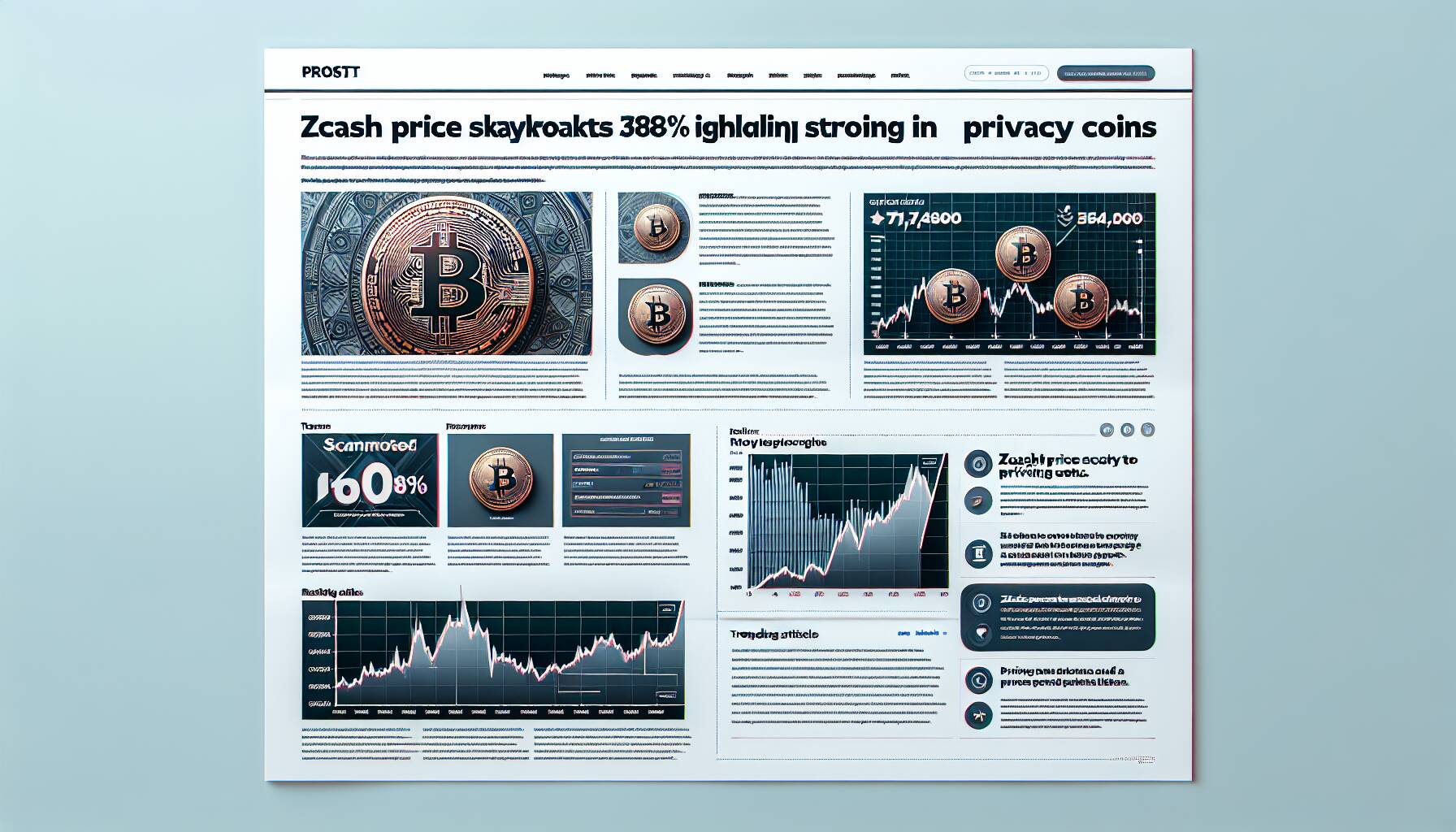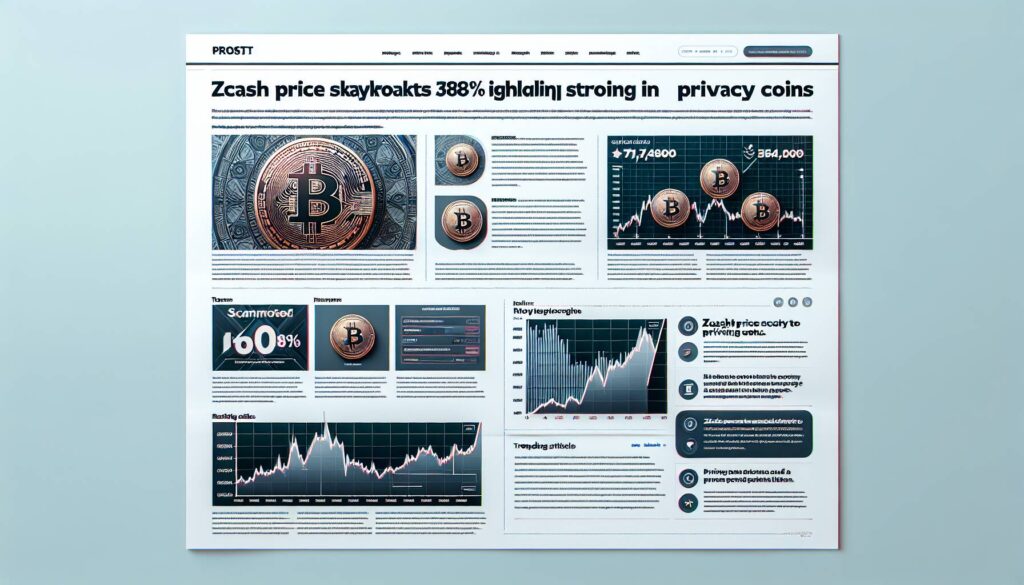The cryptocurrency market is often characterized by its volatility, and this month, one particular digital asset has made headlines for an extraordinary price leap. Zcash (ZEC), the privacy-focused cryptocurrency, has seen its price skyrocket by an astounding 380% in just a few weeks. This remarkable surge has captured the attention of investors and enthusiasts alike, prompting discussions about the underlying factors driving this impressive performance.
“The meteoric rise of ZEC seems to be tied to growing interest in privacy coins and an increasing focus on secure financial transactions in the digital age.”
Market analysts have noted that the recent boost in ZEC’s value may reflect broader trends within the cryptocurrency space, including a renewed interest in privacy solutions amidst rising concerns about data security and personal privacy online. As more users seek ways to protect their financial information, ZEC’s unique offerings appear to resonate strongly with an evolving audience.
As the cryptocurrency ecosystem continues to evolve, ZEC stands at the forefront of discussions about financial privacy, making this month’s price surge a significant event worth watching closely.

ZEC’s Price Surge Overview
This month, ZEC has experienced a remarkable price increase. Here are the key points regarding this development:
- Significant Price Increase: ZEC’s price has surged by 380% within a month.
- Market Sentiment: Increased interest from investors and market speculation are driving the price up.
- Potential Risks: Such rapid increases may lead to volatility and potential market corrections.
- Impact on Investors: Current and potential investors must evaluate their strategies amidst this price fluctuation.
- Broader Market Trends: ZEC’s performance may influence other cryptocurrencies and investment trends.
- Long-term Viability: Questions may arise regarding ZEC’s fundamentals and long-term sustainability amidst its price rise.
Investors should consider both the opportunities and risks associated with investing in ZEC following its unprecedented surge.
ZEC’s Astounding Price Surge: A Competitive Landscape Analysis
The recent 380% surge in ZEC’s price marks a significant event in the cryptocurrency market, grabbing attention and stirring excitement among investors. This explosive growth positions ZEC as a standout identifier amid its competitors, particularly Bitcoin and Ethereum. These established cryptocurrencies have faced volatility, whereas ZEC’s upward trajectory presents it as a compelling alternative for those seeking strong returns.
Competitive Advantages: ZEC’s rapid price increase offers several advantages for potential investors. Firstly, such a drastic rise in value can attract new users looking for quick gains, thus enhancing ZEC’s market capitalization and visibility. Additionally, this surge may indicate a growing acceptance and utility of ZEC in transactions, which could bolster its market position against other cryptocurrencies that have faced stagnation. Market sentiment often gravitates towards assets experiencing significant price movements, creating a favorable perception and pushing more capital into ZEC.
Competitive Disadvantages: However, ZEC’s meteoric rise isn’t without its drawbacks. The volatility that accompanies such surges can create instability and uncertainty among investors, particularly those who entered at peak prices. Furthermore, established players like Bitcoin and Ethereum hold larger market shares and more robust ecosystems, which offer advantages that ZEC might struggle to replicate. This could lead to a potential retraction if investors decide to lock in profits too quickly, creating a turbulent environment for newcomers.
This remarkable increase in ZEC’s price can benefit traders and speculative investors, drawn by patterns of rapid gains. Conversely, it may pose risks for long-term holders or conservative investors who prefer stability over volatile trading. Those who rely on deeper fundamentals or extensive use cases may find this surge concerning if it fails to align with underlying value propositions, raising questions about sustainability in the long run.














